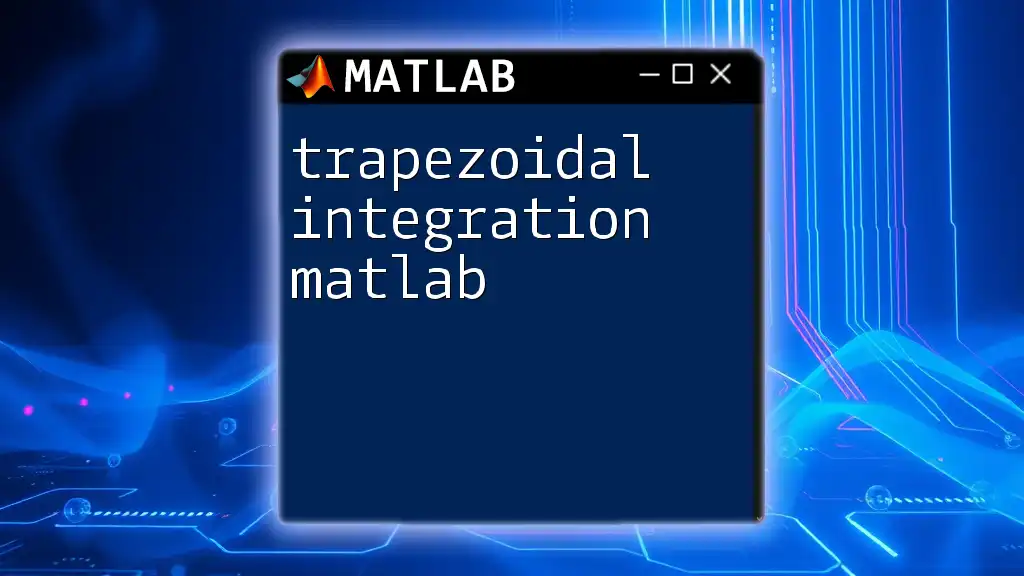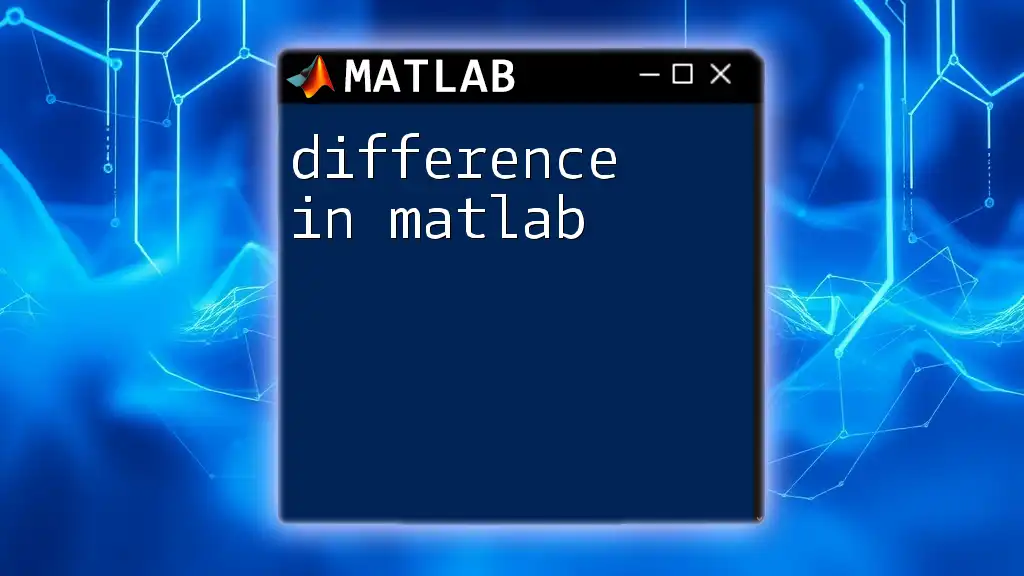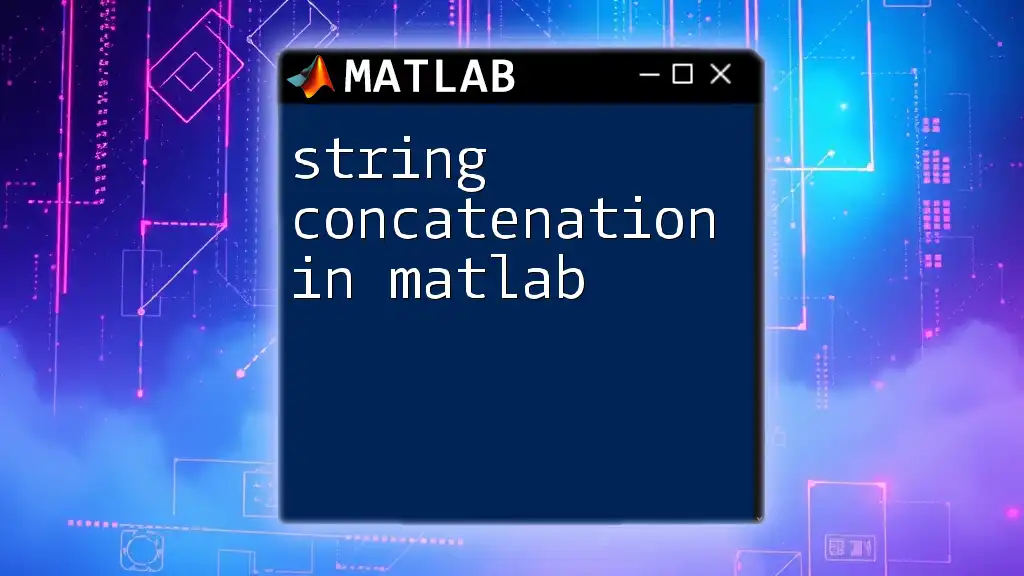In MATLAB, you can solve differential equations using the `ode45` function, which is ideal for non-stiff ordinary differential equations.
Here’s a simple code snippet to solve the differential equation dy/dt = -2y, with an initial condition y(0) = 1:
% Define the differential equation as a function
dydt = @(t, y) -2 * y;
% Set the time span and initial condition
tspan = [0 5];
y0 = 1;
% Solve the differential equation
[t, y] = ode45(dydt, tspan, y0);
% Plot the result
plot(t, y);
xlabel('Time t');
ylabel('Solution y');
title('Solution of dy/dt = -2y');
Types of Differential Equations
Ordinary Differential Equations (ODEs)
Ordinary Differential Equations (ODEs) are equations that contain functions of a single variable and their derivatives. For instance, the equation \( \frac{dy}{dt} = -2y \) models exponential decay, and it is crucial in various applications, including population dynamics and radioactive decay. Understanding ODEs is essential for engineers and scientists, as they provide models for systems that change over time.
Partial Differential Equations (PDEs)
Partial Differential Equations (PDEs), on the other hand, involve functions of multiple variables. An example is the heat equation \( u_t = u_{xx} \), which describes heat distribution over time and space. PDEs are widely used in fields such as fluid dynamics, quantum mechanics, and financial mathematics, enabling complex phenomena to be modeled and analyzed.

MATLAB Overview for Solving Differential Equations
Why Choose MATLAB?
MATLAB is favored for solving differential equations due to its powerful numerical computing capabilities, which enable users to handle complex calculations effortlessly. Its straightforward syntax and built-in functions make it an ideal environment for both beginners and advanced users to solve mathematical problems efficiently. Users can focus on developing models rather than getting bogged down in the computations.
Required Toolboxes
To effectively solve differential equations in MATLAB, it’s advantageous to utilize the Symbolic Math Toolbox. This toolbox enhances MATLAB's capabilities, allowing for symbolic computation and manipulation of mathematical expressions, which is especially useful for deriving general solutions or simplifying calculations.
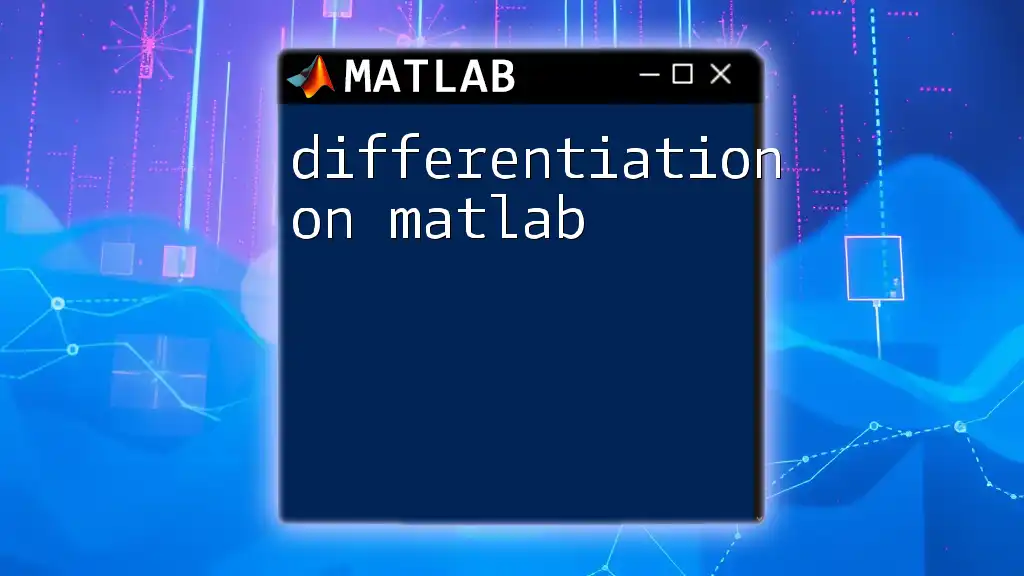
Solving Ordinary Differential Equations (ODEs)
Formulating the ODE
When tackling ODEs in MATLAB, the first step is to formulate the equation clearly. For example, consider our equation \( \frac{dy}{dt} = -2y \) with an initial condition of \( y(0) = 1 \). Understanding how to interpret such equations and their initial conditions is critical for accurate solutions.
Using MATLAB's Built-in Functions
The `ode45` Function
MATLAB's `ode45` function is one of the most widely used tools for solving ODEs numerically. It employs an adaptive Runge-Kutta method, efficiently handling a wide range of problems. Here’s a detailed step-by-step example of how to use `ode45` to solve our ODE.
% Example Code
tspan = [0 5]; % Time interval from 0 to 5
y0 = 1; % Initial condition y(0) = 1
odefun = @(t, y) -2 * y; % Function defining the ODE
[t, y] = ode45(odefun, tspan, y0); % Solving the ODE
plot(t, y) % Plotting the solution
xlabel('Time t')
ylabel('Solution y')
title('Solution of ODE using ode45')
In this code:
- `tspan` specifies the time range for the integration.
- `y0` is the initial condition.
- The function `odefun` defines the differential equation. This is passed to `ode45`, which returns time values `t` and corresponding solution values `y`.
Visualizing Solutions
Visualizing the solution of an ODE is crucial for understanding the behavior of the system over time. The plotted graph allows you to discern patterns and dynamics in the solution, providing insights into the underlying problem.

Solving Partial Differential Equations (PDEs)
Formulating the PDE
The formulation of PDEs requires careful consideration of the variables involved. For instance, the heat equation \( u_t = u_{xx} \) describes how temperature \( u \) changes over time \( t \) and space \( x \). Understanding boundary and initial conditions is vital for solving these equations effectively.
Using MATLAB's Built-in Functions
The `pdepe` Function
MATLAB’s `pdepe` function is specifically designed for solving systems of parabolic and elliptic PDEs. Here’s how you can use `pdepe` to solve the heat equation as an example:
% Example Code
m = 0; % symmetry, m=0 indicates a slab
x = linspace(0, 1, 20); % Define space grid
t = linspace(0, 2, 5); % Define time grid
sol = pdepe(m, @heatpde, @heatic, @heatebc, x, t); % Solve the PDE
surf(x, t, sol) % Surface plot of the solution
xlabel('Distance x')
ylabel('Time t')
zlabel('Temperature u')
title('Solution of PDE using pdepe')
In this example:
- `m` defines the symmetry of the problem.
- `x` and `t` create grids for space and time.
- `@heatpde`, `@heatic`, and `@heatebc` are handles to functions that define the PDE, initial conditions, and boundary conditions, respectively.
Visualizing Solutions
Visualizing the output of a PDE helps in interpreting the results effectively. A surface plot can illustrate how the solution evolves over time and space, providing a comprehensive view of the temperature distribution.

Advanced Techniques
Numerical Methods for ODEs
For those looking to delve deeper, understanding various numerical methods for solving ODEs can be beneficial. Euler's method and higher-order Runge-Kutta methods offer alternative approaches, each with their accuracy and stability considerations. Implementing these methods in MATLAB allows for custom solutions tailored to specific needs.
Symbolic Solutions
Using the Symbolic Math Toolbox can also facilitate solving differential equations symbolically. An example is shown below, where we derive the solution for the ODE \( \frac{dy}{dt} = -2y \):
syms y(t)
Dy = diff(y); % Define the derivative
ode = Dy == -2*y; % ODE formulation
conds = y(0) == 1; % Initial condition
sol = dsolve(ode, conds); % Solving the ODE
disp(sol) % Display the solution
This approach enables us to derive an analytical solution which can be compared against numerical results for verification.
System of Differential Equations
When working with systems of ODEs, the formulation becomes slightly more complex, but MATLAB can efficiently handle these cases. For example, consider two coupled ODEs representing two interacting species. Understanding how to set up and solve such systems can yield valuable insights into their dynamics.
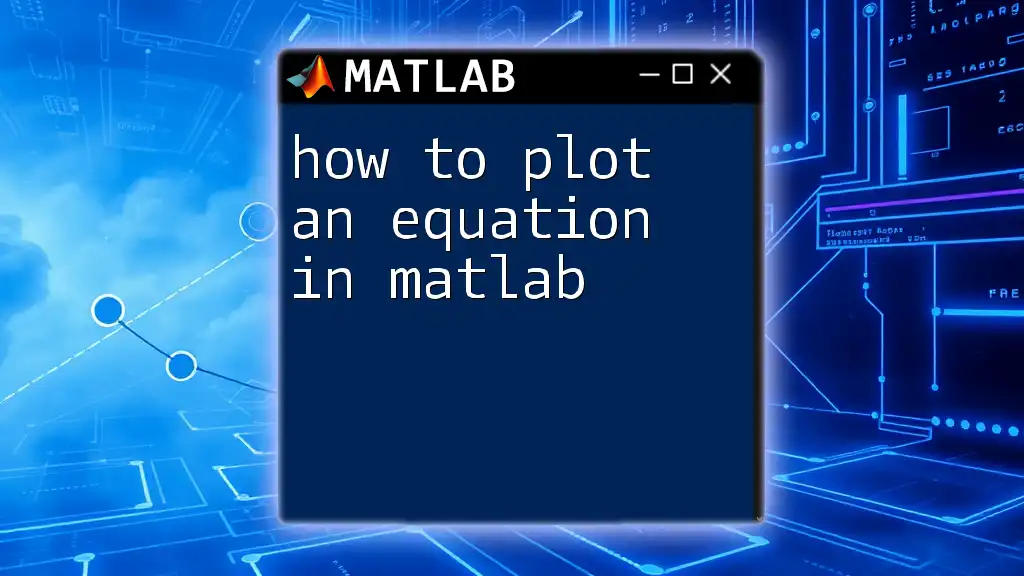
Best Practices When Solving Differential Equations
When approaching the solution of differential equations in MATLAB, several best practices can enhance the outcome:
- Choose the right method based on your problem. Some equations are better suited for numerical methods, while others can be solved symbolically.
- Validate your solutions. Always verify numerical results against known analytical solutions or simplified cases.
- Debugging is crucial. Familiarize yourself with common pitfalls in MATLAB coding, such as correctly defining functions and managing variable scopes.

Conclusion
In summary, the solution of differential equations in MATLAB is a powerful toolset for engineers, scientists, and mathematicians alike. By leveraging MATLAB’s built-in functions like `ode45` and `pdepe`, users can efficiently solve both ordinary and partial differential equations. Understanding the formulation, visualization, and advanced techniques enables you to apply these concepts effectively.
Continue exploring these methods and consider enrolling in courses to deepen your MATLAB skills, unlocking the potential to solve even more complex mathematical challenges.

Additional Resources
To further enhance your knowledge, consider consulting recommended textbooks, online courses, and MATLAB documentation. These resources can provide deeper insights and advanced techniques to refine your differential equation-solving abilities in MATLAB.










